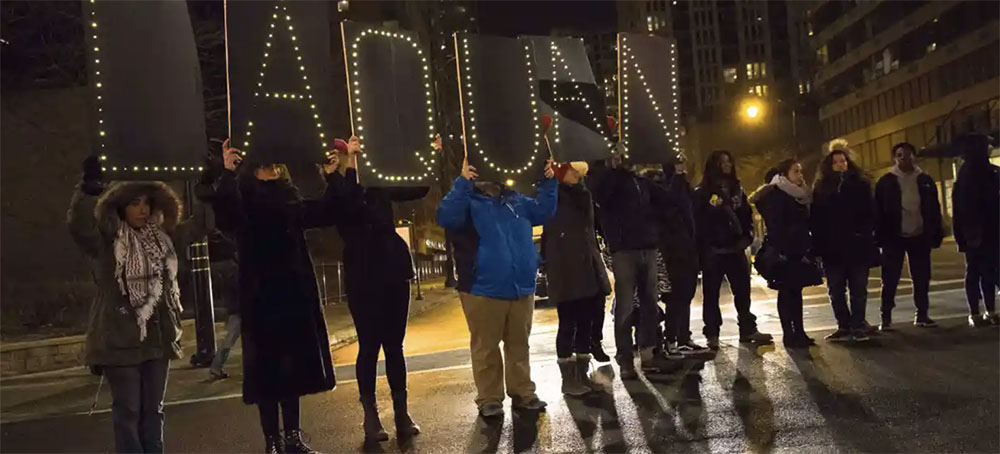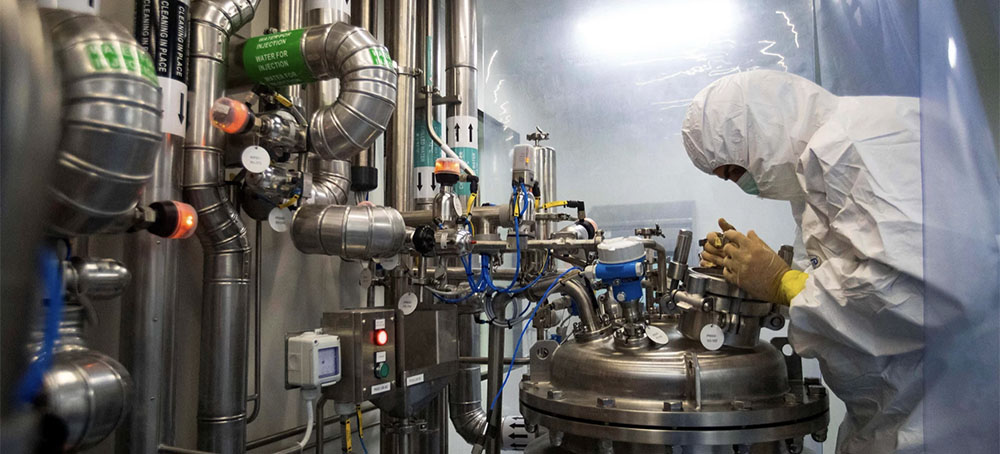Live on the homepage now!
Reader Supported News
The tragedy is that whoever she is, she is likely destined to sit helplessly as arguably the most politically motivated Supreme Court in American history takes a chainsaw to African American Voting Rights and seventy five years of American social progress in general.
Far from being able to materially effect outcomes a black woman Justice on this radically conservative court having been appointed by a Democratic President, by her very presence would almost certainly lend an air of legitimacy to a court that in fairness should be viewed as having none and is rather desperately struggling to gain some anyway it can.
At least two key Republican Senators, Minority Leader Mitch McConnell and Lindsey Graham of South Carolina are signaling some receptiveness to a Biden nomination. That’s a far cry from unified resistance to allowing then President Obama’s otherwise perfectly legitimate court nominee Merrick Garland or slamming through the nomination of Amy Coney Barrett in the waning days of Donald Trump’s presidency, after he was defeated at the polls by American voters.
So why now the more reasonable tone and approach by those who sought openly and brazenly to rig the court to achieve right-wing political goals? Their problem has changed. Having successfully stacked the court with young radically conservative political actors who will use the court to effect social changes Senate Republicans could not, their next challenge is to legitimize and normalize this court they have made.
As calls to reform the court grow its legitimacy becomes an increasingly central issue. The appearance of propriety and most importantly, impartiality are central to public perception. Putting a highly qualified and otherwise fair-minded black woman justice on the court might very well enhance the court’s public perception and standing. That is until the public feels the full weight of the rulings that are coming from the now 6-3 right-wing majority.
In the crosshairs of the court that she who liberal Biden would appoint are among other things, voting rights for all Americans with a focus all voters not supportive of the New Radical Right, voters inclined to value social progress and specifically black voters in states controlled by Republican legislatures. In addition the landmark Roe v. Wade ruling appears all but overturned along with longstanding doctrines pertaining to the separation of church and state. But those are just a few highlight-previews. This new court has much, much more in store for America, think 1930s, economically and socially.
What sets this court apart from previous courts, who’s rulings enraged the right and pleased the left is its perspective in relationship to public sentiment. The Warren Court, which produced the landmark 1973 Roe v. Wade decision may have produced a decision that was unique and required a modicum of creativity but it possessed one crucially important asset, widespread public support.
This iteration of the Roberts court will attempt to have an equal or greater impact on American life in controversion of the will of the vast majority of U.S. citizens. Court conservatives love to portray the original text of the constitution in biblical terms. Their argument in effect being, the original text is the original text and public sentiment is irrelevant. There’s a firestorm in that logic that they little comprehend.
However a black woman Justice with considerable professional and personal integrity could go a long way towards solving that problem. That is a role the new Justice — must not accept.
There is only one way to address a court determined to impose its will on an unwilling country, court reform. McConnell may have stolen the court but he has likely rendered it moot as well. The Court Reform movement must move forward regardless of the character of Stephen Breyer’s successor.
Marc Ash is the founder and former Executive Director of Truthout, and is now founder and Editor of Reader Supported News.
Reader Supported News is the Publication of Origin for this work. Permission to republish is freely granted with credit and a link back to Reader Supported News.
 Former President Donald Trump gestures at a rally in Conroe, Texas, on Jan. 29, 2020. (photo: Go Nakamura/Reuters)
Former President Donald Trump gestures at a rally in Conroe, Texas, on Jan. 29, 2020. (photo: Go Nakamura/Reuters)
Other documents Trump ripped up were not reconstructed when handed to the National Archives, it said.
"Some of the Trump presidential records received by the National Archives and Records Administration included paper records that had been torn up by former President Trump,” the agency said in a statement to NBC News. "As has been reported in the press since 2018, White House records management officials during the Trump administration recovered and taped together some of the torn-up records," a reference to reports that Trump habitually ripped up documents and threw them away after reading them.
“These were turned over to the National Archives at the end of the Trump administration, along with a number of torn-up records that had not been reconstructed by the White House,” the agency said.
The National Archives recently turned over hundreds of pages of Trump White House documents to the House select committee investigating the Jan. 6 attack on the Capitol. The records were handed over after a months-long court battle that culminated with the Supreme Court deciding last month to reject Trump’s efforts to block their release.
The National Archives did not make clear in its statement Tuesday whether some of the documents the committee received included the torn up and re-taped records.
The Jan. 6 committee did not immediately return a request for comment.
The President Records Act requires that all presidential records be turned over to the National Archives at the end of their administrations, the agency's statement noted.
Politico reported in 2018 that White House officials had to use clear Scotch tape to reconstruct large piles of shredded paper from former President Donald Trump as if it were a “jigsaw puzzle.”
 Judge Ketanji Brown Jackson speaks in February 2020 while being honored at the University of Chicago Law School's Parsons Dinner. (photo: Lloyd DeGrane/Wikimedia Commons)
Judge Ketanji Brown Jackson speaks in February 2020 while being honored at the University of Chicago Law School's Parsons Dinner. (photo: Lloyd DeGrane/Wikimedia Commons)
Judge Ketanji Brown Jackson of the U.S. Court of Appeals for the District of Columbia Circuit wrote that a federal labor board failed to explain its abrupt departure in 2020 from decades of precedent when it limited government agencies' obligations to bargain with unions over workplace changes.
The ruling represented an important win for unions that collectively represent more than a million government employees and could help burnish Jackson's reputation with organized labor and Democrats as Biden considers appointing her to the Supreme Court. Labor unions are an important constituency for Democrats.
Biden has said he will nominate a Black woman to replace Breyer, a member of the court's liberal wing, and Jackson is believed to be among the handful under close consideration.
Jackson, 51, spent eight years as a federal judge in Washington before joining the D.C. Circuit last June, and prior to Tuesday had not authored any opinions for the court. As a district court judge she ruled against the Trump administration in a series of high-profile cases, but was often reversed by the D.C. Circuit.
Breyer, who is 83 and joined the Supreme Court in 1994, said he will step down at the end of the court's current term in June. His retirement gives Biden a first chance to shape the court, whose 6-3 conservative majority has shown an increasing assertiveness on issues including abortion and gun rights.
A Biden appointee to replace Breyer would not change the court's ideological balance, but would enable him to refresh its liberal wing with a much younger jurist who could serve for decades in the lifetime post.
 Protesters engage with Chicago police after the video of McDonald being shot was released in 2014. (photo: ZUMA Wire/REX Shutterstock)
Protesters engage with Chicago police after the video of McDonald being shot was released in 2014. (photo: ZUMA Wire/REX Shutterstock)
Jason Van Dyke’s six-year sentence for killing Laquan McDonald was commuted by three years for ‘good behavior’
Jason Van Dyke, who was convicted of murder in 2018, was sentenced to six years and nine months for the murder of 17-year-old Laquan McDonald, after video showed Van Dyke shooting the teenager 16 times.
Van Dyke is now set to be released on 3 February, almost three years ahead of schedule. He will remain on parole for at least two years.
Members of McDonald’s family, local activists and political leaders have voiced their fury over Van Dyke’s early release, noting that he served just a fraction of the 18 years prosecutors originally sought, let alone the maximum 96 years Van Dyke could have received for his charges.
In a press conference last Thursday held by McDonald’s relatives at a local church, his grandmother, Tracie Hunter, called Van Dyke’s punishment a “slap on the wrist”, according to the Chicago Tribune.
“I just want justice, the right justice,” Hunter said. “I’m not going to rest or be satisfied until this man does his rightful time.”
“It’s crazy how I go to a cemetery and talk to a tombstone while this man can talk to his wife and two kids,” said Tanesha Hunter, McDonald’s aunt, in a separate press conference on Monday.
Local activists have led several protests over the past week, including a rally outside Illinois governor JB Pritzker’s home last Friday. A number of actions are planned for Thursday, when Van Dyke will be released.
“He represents all the officers who we could not hold accountable, or that the justice system has not held accountable yet,” community organizer William Calloway told the Chicago Tribune, listing other people killed by Chicago police officers including 29-year-old Flint Farmer in 2011, 15-year-old Dakota Bright in 2012, 15-year-old Michael Westley in 2013, and 19-year-old Roshad McIntosh and 25-year old Ronald Johnson III in 2014.
The Reverend Jesse Jackson said he is also organizing a march for Thursday and has joined other organizers in calling for the justice department to pursue federal civil rights crimes against Van Dyke. A federal investigation was opened in 2015 but charges were never filed.
“We all know that 81 months is not enough to fully hold Van Dyke accountable and we know that there is a movement in this city. That is the reason why Van Dyke is behind bars, so we are reactivating that movement,” Jazmine Salas of the Chicago Alliance Against Racist and Political Repression, one of the organizations that signed a letter to the Department of Justice asking for federal charges, told WTTW.
Pritzker himself has been critical of Van Dyke’s shortened sentence, saying last Friday that he was “disappointed” in the outcome.
“The justice system isn’t always just, and I do not think that the outcome of sentencing of Jason Van Dyke was proper,” the governor said. “I am disappointed and I would have rather seen a different outcome. But this is where we are.”
Backlash against Van Dyke’s release has been magnified by Chicago’s shaky record on police reform after McDonald’s murder and more police-involved shootings since, despite a consent decree mandating reform. The decree was issued after a blistering justice department investigation into the Chicago police department found excessive, racist force and widespread corruption.
“We are not where we want to be when it comes to police reform and accountability, but we are further along in two-plus years of doing this work than any other city that has been under consent decree,” said the Chicago mayor, Lori Lightfoot.
Jamie Kalven, the investigative journalist who broke the Laquan McDonald story and founded the non-profit Invisible Institute, told ABC7 Chicago that despite “discernible progress in some discrete areas, we have thus far failed and our institutions have failed to really rise to that challenge”.
“The verdict is far more important than the sentence, and I’m not sure we’d be in a different place as a city right now if Jason Van Dyke had gotten 12 years or 20 years,” said Kalven.
In October 2014, Van Dyke and another officer responded to calls of a teenager carrying a knife and allegedly damaging cars in the South Side area of Chicago. Within six seconds of exiting his police vehicle, Van Dyke shot McDonald 16 times as the teenager was walking away. Many of the bullets hit McDonald as he fell to the ground.
Three other police officers, all acquitted of any charges but ultimately fired from the department in 2019, filed false police reports accusing McDonald of lunging towards officers with a knife and failing to interview eyewitnesses who saw the shooting. Discrepancies in their accounts were only uncovered once dash cam footage from Van Dyke’s car showing McDonald’s murder was released.
The murder sparked nationwide protests and global coverage. Many accused then mayor Rahm Emanuel, who was recently confirmed as US ambassador to Japan, of a coverup ahead of his reelection campaign in 2015, after video of the shooting was withheld for more than a year.
 A Cuban industrial complex prepares to start production of one of the country's newly developed COVID vaccines. (photo: Yander Zamora/Pool/AFP/Getty Images)
A Cuban industrial complex prepares to start production of one of the country's newly developed COVID vaccines. (photo: Yander Zamora/Pool/AFP/Getty Images)
ALSO SEE: US Has Far Higher COVID-19 Death Rate Than
Other Wealthy Nations
Why did the Communist island nation decide to go it alone?
It didn't want to rely on the whims of foreign governments or international pharmaceutical companies to immunize its people. Cuba didn't even sign up for the COVAX program, backed by the World Health Organization, that was promising to purchase vaccines in bulk and distribute them equitably around the globe.
Cuba was taking a gamble that it could develop a vaccine before the coronavirus swept across on the island.
"I don't like the word 'gamble'," says Cuban virologist Amilcar Pérez Riverol about his nation's strategy. "I prefer the word 'risky'."
Pérez Riverol left Cuba in 2013 and now works as researcher at the São Paulo Research Foundation at São Paulo State University in Brazil. But he writes regularly about the COVID situation in Cuba on his Facebook page and elsewhere. He used to work in the labs in Havana that were tasked with developing Cuba's home-grown vaccines.
And he was confident that Cuban scientists could win this race against the virus. "I was there, I worked there. I know the people who work there, the spirit they have, the institution they have," he says. It was a huge project, but when they launched it, he says he thought, "Yeah, they can do that."
Cuba's vaccine development effort wasn't just risky from health perspective. Politically if the rest of the world got vaccine far earlier than Cuba, it would be a huge blow to the government. Pérez Riverol says getting a Cuban-made vaccine became an all-consuming project for the country.
"It became the top priority for the whole country, not only for the scientific community or the health authorities," he says. "But also from the political point of view the message was 'get this done.' Because it was the only opportunity to get people vaccinated."
Cuba now has five vaccines in various stages.
Three of the vaccines, Soberana 1, Soberana 2 and Soberna Plus, were developed at the Finlay Institute in Havana. The other two, Abdala and Mambisa, came out of Cuba's Center for Genetic Engineering and Biotechnology. Soberana 2, Soberana Plus and Abdala are authorized by the Cuban authorities for use and export while the other two (one of which is a nasal spray) are still in clinical trials. None of them have yet been authorized by the World Health Organization or any other major international regulator
But they've allowed Cuba to boast one of the highest COVID vaccination rates in the world. More than 85% of the island nation is fully immunized against the virus — a far higher vaccination rate than the U.S. It even tops every country in Europe except Portugal. The country is even giving the shots to kid as young as 2 years old.
At a time when many other low- and middle-income nations continue to struggle to get enough doses, Cuba is exporting vaccine to Iran, Venezuela, Mexico, Nicaragua and Vietnam.
Pérez Riverol says Cuba was able to pull off this pharmaceutical feat for a number of reasons.
First, Cuba already had a robust vaccine manufacturing sector. The country of 11 million people produces most of its own inoculations for its routine childhood immunization program, targeting diseases such as yellow fever, whooping cough, diphtheria, tetanus.
"They have the whole infrastructure, you know," Pérez Riverol says. "They've been working on vaccines for more than 30 years."
And second, they didn't attempt to re-invent the wheel. They took existing vaccines for other diseases and tweaked them by adding a portion of the SARS-CoV-2 virus.
All the COVID vaccines developed in Cuba are what are known as protein subunit conjugate vaccines.
"This is a technology that we've had around for a while," says Amira Roess, a professor of global health and epidemiology at George Mason University and a non-resident scholar at the Middle East Institute.
This type of vaccine, Roess says, "is something that a lot of companies and a lot of countries have tons of experience with." These vaccines are like the sturdy 1950's Ford Fairlane coupes that still chug through Havana's streets. By comparison, the flashy new mRNA COVID vaccines from Pfizer and Moderna would be high-tech Teslas.
Roess says it makes sense that Cuba used this old-school vaccine platform to build its COVID shots.
The Abdala vaccine – named after a dramatic poem by José Martí, the 19th Century activist for Cuban independence from Spain – was developed by the Center for Genetically Engineered Biotechnology and is based on the same technology the center uses in its hepatitis B vaccine, says Pérez Riverol.
The vaccine called Soberana 2 – or Sovereign 2 — is based on an existing influenza vaccine produced by the Finlay Institute.
"So actually, all these [Cuban COVID] vaccines have like an older cousin or an older brother," says Pérez Riverol.
Data released by the Cuban government in October of 2021 prior to the omicron surge showed the vaccines developed in Havana to be up to 92% effective against SARS-CoV2.
Cuba's success in developing COVID vaccine at a pace on par with some of the world's largest pharmaceutical companies may seem surprising. The country has been in economic and social turmoil. It's been facing shortages of food, fuel and foreign currency, that sparked major street protests last summer. Pandemic lockdowns further battered the economy, depriving the country of one of it's largest sources of revenue- tourism. U.S. President Trump in his final days in office, ramped up sanctions against the communist island, making it even harder for Cuba to import raw materials and pharmaceutical manufacturing equipment. But William LeoGrande, a professor of government at American University in Washington, D.C. who's written extensively about Cuba, wasn't surprised that Cuba's bet on a domestic vaccine paid off. LeoGrande says many people in the U.S. often underestimate the sophistication of the Cuban biotech industry.
"The reason is because there are large sectors of the Cuban economy that really don't work very well," he says. "And so the image that that creates here in the United States is that nothing works in Cuba. But the reality is that there are some sectors and biotechnology is one of them that work pretty well."
LeoGrande says Cuba's rapid development of 5 COVID vaccines was a major coup for the Caribbean nation.
"Cuba was able to vaccinate virtually the entire population without having to worry about access to foreign vaccines while most of the Third World is not yet vaccinated because the vaccines are all produced in the developed countries," he says. "And finally, Cuba may be able to generate some revenue by selling the vaccines to other developing countries at a time when it is really in desperate need of foreign exchange currency."
One potential stumbling block for exporting Cuban COVID vaccines is that hasn't made progress in getting regulatory authorization for the products from the WHO. Individual countries are still welcome to authorize the shots locally if they so wish but a stamp of approval from WHO or another major regulator would make it far easier for Cuba to export these medical products.
Cuba has submitted Soberana 1, Soberana 2, Soberana Plus and Abdala for Emergency Use Listing by the WHO but their application hasn't moved forward. Notes on the WHO's website tracking the status of vaccine applications says that the regulatory body is still "awaiting information on strategy and timelines for submission" regarding the communist nation's COVID vaccines.
Cuba ran clinical trials for its vaccines yet the data from those studies hasn't been published in peer-reviewed scientific journals.
Pérez Riverol says part of the problem is a culture in Cuba that publication for researchers isn't a priority.
"Because you don't get funding in Cuba for a published paper," he says. "The government gives you the funding. So it's different to what happened in the rest of the world."
He's confident the data will get published eventually, but he says it's been a question of priorities.
"Their priorities were to focus in working on the vaccine and get the clinical trials done" so that people could get immunized, he says. "Not to write a paper or get that paper published."
Even though Cuba didn't want to rely on other countries for vaccine, there was one moment during a terrible Delta surge in August 2021 when they brought in extra doses of Sinopharm from China.
But throughout the rest of the pandemic, they've done what so many other nations couldn't — controlled their own fate when it came to getting vaccines.
 Asset Abishev, a Kazakh political activist, 11 days after he was released from police custody in January. (photo: Sergey Ponomarev/NYT)
Asset Abishev, a Kazakh political activist, 11 days after he was released from police custody in January. (photo: Sergey Ponomarev/NYT)
Through crowdsourcing, rights groups say they are documenting a campaign of beatings and torture.
When his family found his naked, mutilated body in a city morgue six days later, his right hand had been broken and his face was swollen and red. He was still handcuffed, with gunshot wounds near his heart and abdomen.
His family wants an investigation into who killed him. Since his remains were found, other people have begun to come forward with accusations of abuse at the hands of Kazakh authorities.
 Greenland. (photo: Ruben Ramos/Alamy)
Greenland. (photo: Ruben Ramos/Alamy)
Tiny particles including tire dust found in ice cores stretching back 50 years, showing global plastic contamination.
The nanoparticles are smaller and more toxic than microplastics, which have already been found across the globe, but the impact of both on people’s health is unknown.
Analysis of a core from Greenland’s ice cap showed that nanoplastic contamination has been polluting the remote region for at least 50 years. The researchers were also surprised to find that a quarter of the particles were from vehicle tires.
Nanoparticles are very light and are thought to be blown to Greenland on winds from cities in North America and Asia. The nanoplastics found in sea ice in McMurdo Sound in Antarctica are likely to have been transported by ocean currents to the remote continent. Plastics are part of the cocktail of chemical pollution that pervades the planet, which has passed the safe limit for humanity, scientists reported on Tuesday. Plastic pollution has been found from the summit of Mount Everest to the depths of the oceans. People are known to inadvertently eat and breathe microplastics and another recent study found that the particles cause damage to human cells.
Dusan Materic, at Utrecht University in the Netherlands and who led the new research, said: “We detected nanoplastics in the far corners of Earth, both south and north polar regions. Nanoplastics are very toxicologically active compared to, for instance, microplastics, and that’s why this is very important.”
The Greenland ice core was 14 meters deep, representing layers of snowfall dating back to 1965. “The surprise for me was not that we detected nanoplastics there, but that we detected it all the way down the core,” said Materic. “So although nanoplastics are considered as a novel pollutant, it has actually been there for decades.”
Microplastics had been found in Arctic ice before, but Materic’s team had to develop new detection methods to analyze the much smaller nanoparticles. Previous work had also suggested that dust worn from tires was likely to be a major source of ocean microplastics and the new research provides real-world evidence.
The new study, published in the journal Environmental Research, found 13 nanograms of nanoplastics per milliliter of melted ice in Greenland but four times more in the Antarctic ice. This is probably because the process of forming sea ice concentrates the particles.
In Greenland, half the nanoplastics were polyethylene (PE), used in single-use plastic bags and packaging. A quarter were tire particles and a fifth were polyethylene terephthalate (PET), which is used in drinks bottles and clothing.
Half the nanoplastics in the Antarctic ice were PE as well, but polypropylene was the next most common, used for food containers and pipes. No tire particles were found in Antarctica, which is more distant from populated areas. The researchers took samples only from the centers of the ice cores to avoid contamination, and tested their system with control samples of pure water.
Previous studies have found plastic nanoparticles in rivers in the United Kingdom, seawater from the North Atlantic and lakes in Siberia, and snow in the Austrian alps. “But we assume the hotspots are continents where people live,” said Materic.
The researchers wrote: “Nanoplastics have shown various adverse effects on organisms. Human exposure to nanoplastics can result in cytotoxicity [and] inflammation.”
“The most important thing as a researcher is to accurately measure [the pollution] and then assess the situation,” Materic said. “We are in a very early stage to draw conclusions. But it seems that everywhere we have analyzed, it is a very big problem. How big? We don’t know yet.”
Research is starting to be carried out on the impact of plastic pollution on health and Fay Couceiro is leading a new microplastics group at the University of Portsmouth, UK. One of its first projects is with Portsmouth hospitals university NHS trust and will investigate the presence of microplastics in the lungs of patients with chronic obstructive pulmonary disease (COPD) and asthma.
The research will investigate whether recently carpeted or vacuumed rooms, which can have a high number of fibers in the air, trigger the patients’ conditions. “Aside from the environmental damage caused by plastics, there is growing concern about what inhaling and ingesting microplastics is doing to our bodies,” said Couceiro.
Her recent research suggested people may be breathing 2,000 to 7,000 microplastics per day in their homes. Anoop Jivan Chauhan, a respiratory specialist at Portsmouth hospitals university NHS trust, said: “This data is really quite shocking. Potentially we each inhale or swallow up to 1.8 million microplastics every year and once in the body, it’s hard to imagine they’re not doing irreversible damage.”
Follow us on facebook and twitter!
PO Box 2043 / Citrus Heights, CA 95611



No comments:
Post a Comment